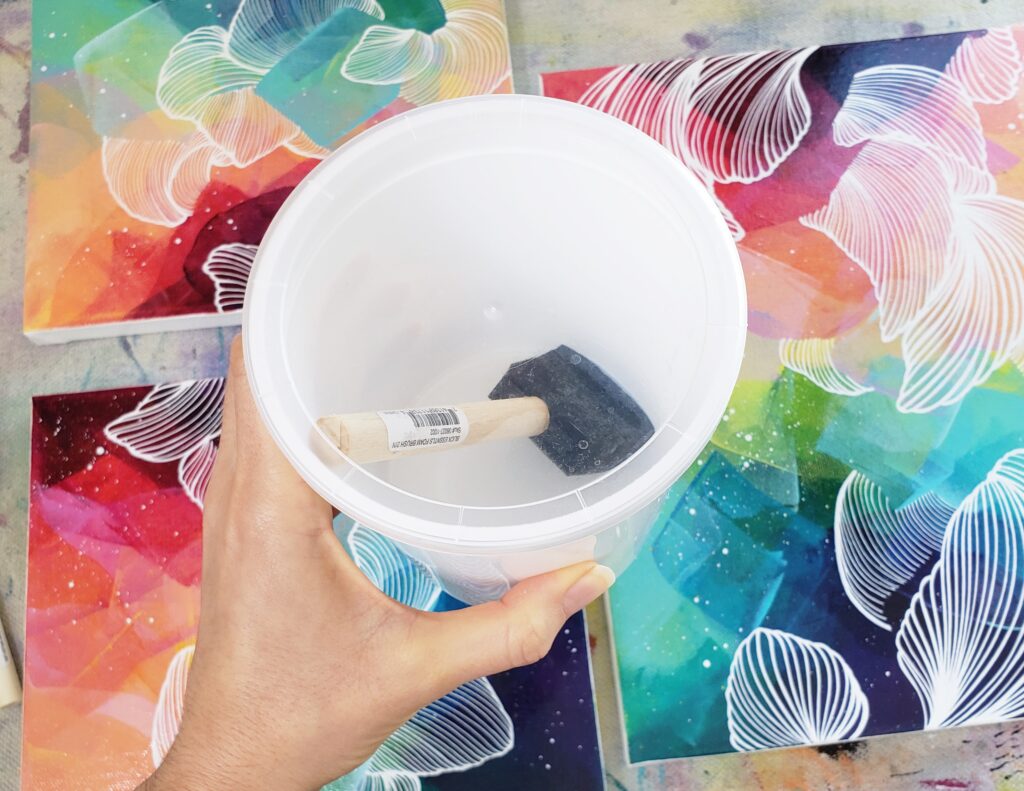I’ve been getting a lot of questions about the acrylic varnish I use on my acrylic canvas art, so it’s time for a little info dump.
*Links contained in this post are affiliate links and I will earn a commission if you make a purchase at no additional cost to you. These commissions help fund more content like this, so thank you!
First of all, yes, you should varnish your finished paintings.
I don’t believe in following all art rules, but varnish is one of those things that I adhere to religiously. Every canvas painting I finish gets at least two coats of varnish. I use acrylic paint, and so I can only speak of acrylic varnishes, but I’m pretty sure oil painters would recommend the same thing. Varnish your work. Unless your finished paintings will be displayed behind glass. In that case, the varnish isn’t a necessity.
Though with materials like charcoal or pastels a coat of spray varnish/fixative to keep particles from falling off even when displayed behind glass.
Here’s why I varnish my artwork:
- It protects the work- a coat of varnish will protect your paintings from dust, moisture, fingerprints, and other random things. Some varnishes (like the one I use) even protects work from UV light.
- It enhances colors- Darker colors under a gloss varnish can look much deeper and more vibrant.
- It creates a consistent surface finish- Some paints have varying gloss or matte finishes. A varnish will bring everything together.
I’m sure there are more reasons to varnish your work–but that’s my list.
Check out a tutorial on how I make artwork like this here.

Products I use to varnish acrylic art:
Liquitex High Gloss Varnish (Amazon or Blick Art Materials)
I LOVE this varnish. It’s non-yellowing, it’s archival, and it’s shiny AF.
COVID has caused inventory issues for Liquitex. When the High Gloss Varnish is in stock, I suggest buying in bulk. In the meantime, the Gloss Varnish (Amazon or Blick) is a good substitute, but not quite as glossy.
If you aren’t a fan of glossy finishes, then I recommend Liquitex Matte Varnish (Amazon or Blick). I use this varnish occasionally.
Cheap 2 inch Foam Brush (Amazon or Blick Art Materials)
Streaks are an issue. Do not use bristled brushes with this varnish. Use a cheap foam brush or even a soft sponge.
Yogurt container with a lid– I don’t rinse out my foam brush with each use. I’m lazy, and foam brushes break down easily with wear and tear. I saturate my brush while varnishing and then store it in a washed-out yogurt container between uses. Once black chunks start to fall off the brush, I toss it and grab a fresh one.

How I apply the varnish:
You can see from the video below, I apply this varnish with slow and even strokes. I try not to pass over an area more than 3 times. It begins to dry quickly, so don’t rework areas you covered after moving on. Read the directions on this varnish. Do not water it down. Do not overwork it or it can get foggy. Apply a thin coat and wait 3 hours before applying the next. I apply two coats total.
I paint and varnish the sides of my canvases as well.
Tiny bubbles can form while applying. I don’t have any issues with them after the varnish dries, but sometimes I will blow on the canvas to pop them, slap the back of the canvas a few times, or tap the canvas frame on my table to vibrate the surface, pop bubbles, and even out any areas that pooled.
***
Voila!
Let me know if you have questions! If you enjoy learning about the supplies I use in the studio and want to know more, let me know through Instagram or Email.
-Kelly

